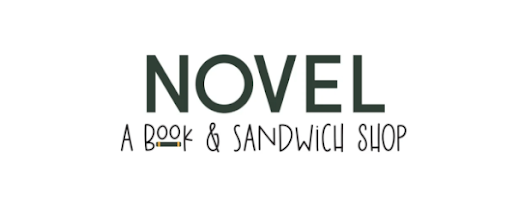
All About Graphic Novels and How to Read Them
Share
Whether you grew up reading the Sunday funnies each week from your parent's newspapers or have only recently had your interest in comics piqued, one thing is certain: there are endless graphic novels waiting to be read. Just because they use illustrations to tell the story doesn't mean they're any less valuable than a traditional fiction book! With a little help from us, you can discover the many reasons why readers of all ages love graphic novels and learn how to properly read one.
What is a Graphic Novel?
Graphic novels tell narrative stories by combining artistic illustrations and creative dialogue in panels to create what is essentially a novel-length comic book. Just like a normal fiction novel, these can fall under any popular book genre and be written for a wide assortment of age ranges, from pre-K to adult.
Popular Graphic Novel Genres
- Science fiction
- Fantasy
- Superhero
- Mystery
- Historical fiction
- Horror
- Contemporary young adult
Why Are Graphic Novels Becoming More Popular?
Did you know that graphic novels skyrocketed in popularity during the pandemic? With TV and film becoming less accessible and productions shutting down, it's clear people from all backgrounds were looking for a new way to be entertained. For some, traditional novels just weren't cutting it. Suddenly, a whole new era of readers fell in love with this niche book category—and it’s been on the rise ever since.
There's also official research surrounding the fact that graphic novels help get kids interested in reading as a hobby instead of just a homework requirement. When middle-grade subjects are combined with exciting art, engaging plots, and easily comprehensible dialogue, children are more likely to pick up the book on their own—without any nagging!
Get to Know the Elements of a Graphic Novel
Before you pick up a comic, it's a good idea to break down the structure into its most basic elements, such as:
Panels or Frames
If you've ever read a comic strip, you've seen these. A panel is an individual frame showing a snapshot of the story that consists of a single drawing. Panels are then strung together to create a sequence that fills up the page. As you're reading, don't just follow the dialogue—it's worth spending time looking at each carefully drawn detail in each panel.
Dialogue in Word Balloons
Well-placed and well-written dialogue is crucial to the quality of a comic book. The majority of panels will have clear word balloons to separate dialogue from the rest of the illustration, with an arrow pointing toward the character that's speaking.
Narrative Caption Boxes
In some comic books, especially those told from the point of view of a narrator, you'll find many caption boxes throughout the story. These words typically appear in a box separated from the rest of the panels, either on top or below, that give a voice to the narrator, explain the scene at hand, or show the character's unspoken thoughts. Think of these as the chunks of text in a traditional novel that helps tell the story outside of the dialogue.
Frequently Asked Questions About Reading Graphic Novels
Making the switch to graphic novels can be daunting if you or your children are used to normal chapter books, but it's easier than you think! With these answers to commonly asked questions, you'll be reading like a pro in no time!
Which Direction Do You Read a Graphic Novel?
Western graphic novels are read left to right (like a traditional book) and then top to bottom. If you're reading a Japanese title, like a manga, it's the reverse, with panels read right to left.
Does a Graphic Novel Count as Reading?
Though it's often debated, we need to make one thing clear: there's no room for snobby attitudes about books here! Graphic novels are full of text and compelling stories and are known to aid in reading comprehension in young kids—so, of course, they count as reading.
Can Adults Read Graphic Novels?
The short answer is—of course, they can! If graphic novels interest you, then we invite you to get rid of anything in you that tries to convince you these beautifully illustrated and powerful stories are "just for kids." In fact, many of them cover darker or more adult themes that aren't appropriate for kids, whether that's the nightmarish world of The Sandman by Neil Gaiman or exploring sexuality in Fun Home: A Family Tragicomic by Alison Bechdel.
When Should Kids Start Reading Graphic Novels?
When your children are ready to graduate from picture books, it's time to introduce them to graphic novels! It's recommended that kids start reading these types of stories around 8-12 to give them helpful reading tools and turn them into young bibliophiles. As you shop for the best graphic novels for kids, you'll find that most publishing companies have rating systems to determine which titles are appropriate for each age group, so pay attention to that before you buy!
Can You Use an Audiobook Service if You Read Graphic Novels?
Just because a graphic novel is mainly about the visuals doesn't mean you have to write off the idea of using an audiobook service. Listening to professional voice actors bring the story to life can help immerse you in the world of your favorite titles. Audiobooks can help you become a better reader, whether just learning to read or getting back into it as an adult!
Get Your Middle Grader Readers Into Graphic Novels with These 10 Titles
If this kind of book sounds right up your alley, you're in luck! Here are just a few of our family favorites and other popular titles that are sure to get your kiddos into the world of graphic novels ASAP:
- Dog Man by Dav Pilkey
- Investigators by John Patrick Green
- Babymouse written by Jennifer L. Holm and illustrated by Matthew Holm
- Wynd written by James Tynion IV and illustrated by Michael Dialynas
- Saving Sunshine written by Saadia Faruqi and illustrated by Shazleen Khan
- Nimona by ND Stevenson
- When Stars Are Scattered written by Omar Mohamed and Victoria Jamieson and illustrated by Iman Geddy
- Wings of Fire by Tui T. Sutherland
- The Baby-Sitters Club by Ann M. Martin, Raina Telgemeier, and Gale Galligan
- The Most Boring Book Ever written by Brandon Sanderson and illustrated by Kazu Kibuishi
See, reading graphic novels isn't as difficult as it looks! Once you learn the correct way to follow the panels and find a title that captures your interest, you'll be sucked into the beautifully illustrated story in no time.





